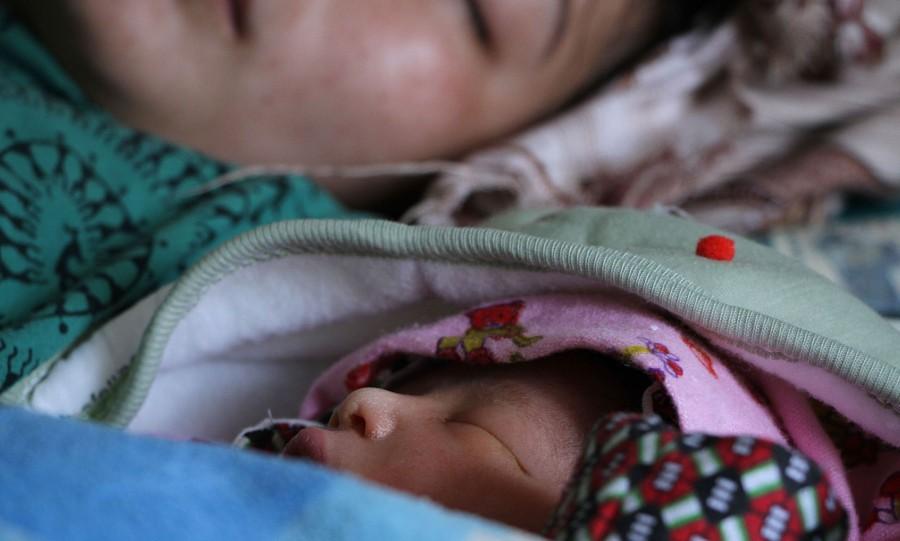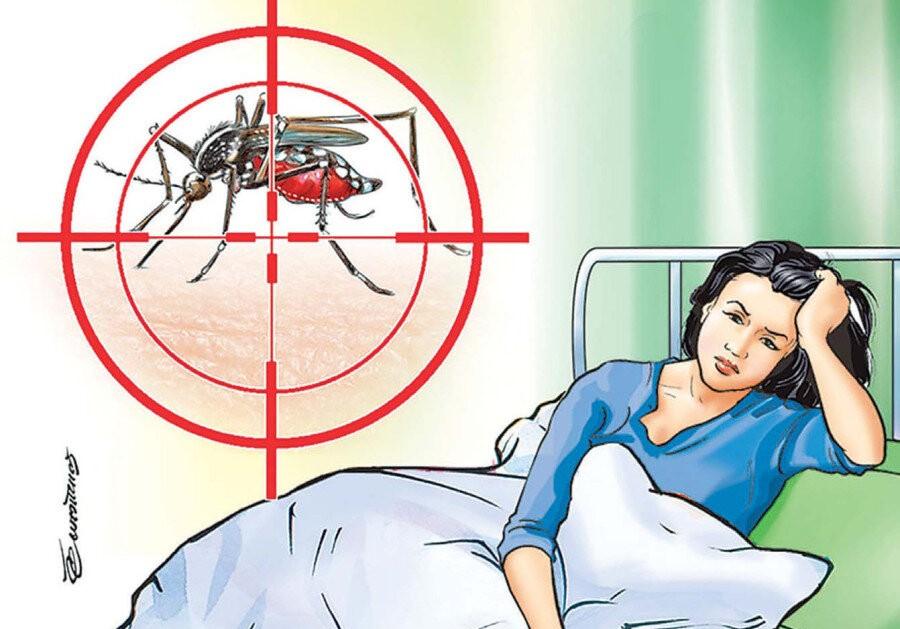
Health
Found 3 news

Road disruptions raise risk of more home deliveries in districts
Concerns are growing about a possible rise in home deliveries in several districts after road links were disrupted last week’s devastating floods and landslides. Officials at the Ministry of Health and Population said that they are aware of the growing risk and have instructed agencies concerned to start risk mapping. “The risk of home deliveries has grown due to last week’s monsoon havoc,” said Dr Bikash Devkota, director general at the Department of Health Services. “We have instructed agencies concerned to monitor the situation and report back. We also held discussions with our development partners about the risks and requested them for help.” At least 233 people have been confirmed dead, while 22 others are still missing in the floods and landslides triggered by record-breaking precipitation in three days starting Thursday evening last week. As many as 169 people have been injured, and more than 17,120 others were shifted to safety, according to Nepal Police. Transport links to many districts have been disrupted by the floods and landslides that swept the roads and bridges in many places. Health facilities and birthing centres in many places were also destroyed in the disaster. Maternal health experts say that the recent disaster could cause a severe setback to maternal and child health and also affect institutional delivery rate. “Due to the disruption in vehicular movements, many pregnant women may not be able to reach birthing centres,” said Nisha Joshi, a public health official at the Family Welfare Division under the Department of Health Services. “Pregnant women and new mothers who have lost family members or property in the disasters would be unable to reach hospitals or health facilities for childbirth.” Health officials say that they have cautioned health workers in the affected areas about the heightened risk of an increase in home deliveries, which increases the risk of maternal and newborn deaths. A report on maternal mortality carried out by the National Statistics Office in 2021 showed that for every 100,000 live births, 151 women still died from maternity-related complications. Similarly, the institutional delivery rate has reached around 80 percent. Maternal death rate and home delivery rate are very high in remote areas. “We are aware of the risk of a rise in home deliveries, which poses a threat to the health of mothers and their newborn,” said Joshi. “We have requested the United Nations Population Fund and Nepal Red Cross Society to distribute warm clothes to 12 new mothers in the Nakkhu area of Lalitpur, who are taking refuge in makeshift shelters.” Maternal health experts say expecting mothers may face difficulties in attending regular checkups during pregnancy, which could put both their lives and babies at risk. Along with a potential drop in institutional deliveries, the number of antenatal and postnatal visits could also decline due to the impact of the disaster, according to them. With the government announcing free institutional delivery service in 2009 at all state-run health facilities, more than 2,800 birthing centres were set up across the country. The institutional delivery rate, which was around 18 percent then, has now increased to an average of around 80 percent across the country. The health ministry also provides travel allowances for antenatal care visits, offers skilled birth attendant (SBA) training to staff nurses, and hires them at birthing centres to help prevent deaths during or after childbirth. Nepal had cut the maternal mortality rate from 539 per 100,000 births in 1996 to 239 per 100,000 births in 2016—for which the country even received a Millennium Development Goals award. In the last fiscal year, at least 190 women from 51 districts died of complications during childbirth, data provided by the health ministry shows. The actual number of maternal deaths due to birth-related complications could be much higher, as maternal and perinatal death surveillance is being carried out in 51 districts only, officials say. Nepal’s target under the UN’s Sustainable Development Goals is to reduce the maternal mortality rate to 75 per 100,000 births by 2030.
Health
Dengue surge sparks critical blood shortage
Ram Prasad Koirala, a resident of Nalagaun in Belkotgadhi Municipality, Nuwakot, spent all of Thursday racing around Kathmandu and Bhaktapur, desperately searching for platelets for his 13-year-old son, who has been infected with dengue. Doctors at the Maharajgunj-based Tribhuvan University Teaching Hospital, where his son is being treated, told Koirala to get platelets as his son’s platelet count had dropped to a dangerously low count of 13,000 per microlitre of blood. A healthy count ranges from 150,000 to 450,000 platelets a microlitre. “The doctors have asked me to arrange six pints of platelets, but I could manage only one pint,” a frustrated Koirala told the Post. “I spent the whole day visiting several blood banks across Kathmandu and Bhaktapur, but still couldn’t find donors.” This was a common refrain among many relatives of seriously ailing dengue patients who had come to the Central Blood Transfusion Service (blood bank) in search of platelets, as hospitals in the Valley have been reporting a surge in dengue cases. Officials at the central blood bank said that the demand for platelet-rich plasma and platelet concentrate has tripled compared to the usual daily collection. “Demand for blood and blood components is about 400 pints a day, but we have been able to collect only around 100 pints,” said Sanjeev Kumar Yadav, senior technical officer at the Central Blood Transfusion Service. “We urge everyone eligible to step forward and donate blood. We have been struggling to meet the demand, and families of critically ill patients are in a difficult situation as they can’t find blood.” Officials attributed last week’s monsoon disaster and the start of the Dashain holidays to the decline in blood collection. They say the closure of colleges for the Dashain holidays, along with many offices and organisations suspending blood donation campaigns due to the festival, has led to a sharp drop in donations. “We are ready to travel to Nuwakot, Dhading and other adjoining districts of the Valley to collect blood, as we have no other option for saving lives,” said Yadav. “Relatives of patients, especially those with dengue, have been waiting at the blood bank round the clock.” Officials at the blood bank are worried about a severe blood shortage, as colleges will not reopen until after the Chhath festival (first week of November), and many people will soon be leaving the Valley. They said there is already a daily demand for over 100 pints of platelet-rich plasma and platelet concentrate for dengue patients. As a single patient requires multiple pints, they lament that it is impossible to meet the demand at the current collection rate. “We have also sought help from mainstream as well as social media for blood donations,” said Yadav. Dengue is a mosquito-borne disease transmitted by female Aedes aegypti and Aedes albopictus mosquitoes. The same vector also transmits chikungunya, yellow fever, and Zika viruses, according to the World Health Organisation. At least seven deaths and 14,975 infections have been reported from 76 of 77 districts across the country. Experts say reported dengue cases could be just the tip of the iceberg, as around 90 percent of the infected people do not show any symptoms. The post-monsoon period is considered a high transmission season for dengue, but Nepal has witnessed outbreaks of the deadly disease since the beginning of the year and across the pre-monsoon, monsoon, and post-monsoon seasons. According to doctors, mild to high fever, severe muscle pain, rashes, severe headache, and pain in the eyes are some symptoms of dengue. The World Health Organisation says there is no specific treatment for severe dengue, but early detection and access to proper medical care can save lives.
Health
Best foods for iron deficiency
Iron is a mineral that serves several important functions, its main one being to carry oxygen throughout your body as a part of red blood cells (1Trusted Source). The Daily Value (DV) for iron is 8-18 mg for non-pregnant adults. A deficiency can occur if your intake is too low to replace the amount you lose daily (2Trusted Source). Interestingly, the amount of iron your body absorbs is partly based on how much you have stored.
Health